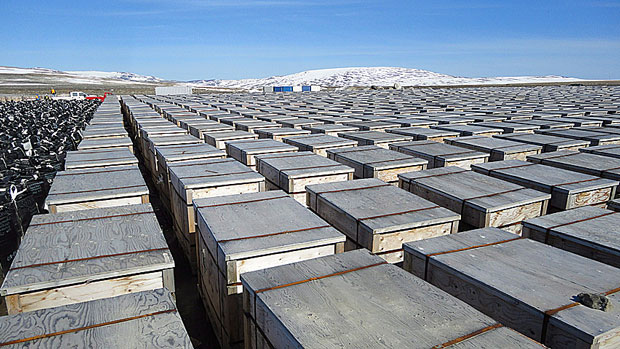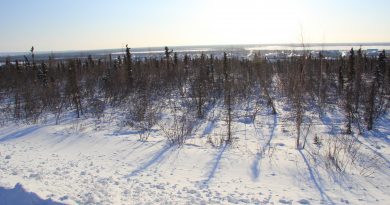Contaminated sites across Canada, including the Arctic, require clean up
 Largest problems include abandoned mines in Canadian North
Largest problems include abandoned mines in Canadian North
The federal government identified 142 contaminated sites as of last September where pollutants need to be contained or eliminated because of a long-term or immediate threat to human health or the environment.
That’s according to a CBC News analysis of the most recently available data compiled by the Treasury Board, one of the departments responsible for maintaining an inventory of sites. Much of the data is available online, but CBC News obtained more complete data under an access-to-information request.
The 142 sites are only those that have reached step eight in a long process that federal departments and agencies must follow to assess and develop plans to clean up or contain damage posed by contaminants.
Step eight is what’s called “remediation/risk management strategy,” which includes identifying the contaminants and whether they are present in soil or groundwater, and developing a plan to remove or treat the contaminants, as well as a detailed contingency plan in case the contaminants are released into the environment.
(For an explanation of how these steps work, see pages 14 to 36 of Contaminated Sites Management Working Group’s report, A Federal Approach to Contaminated Sites.)
DEW lines, native reserves
Contaminated sites that fall into this category dot the Canadian landscape, ranging from decommissioned Distant Early Warning sites that form the so-called DEW line in Canada’s far north, to native reserves, to sites closer to major cities, such as Montreal’s Lachine Canal and Ottawa’s Macdonald-Cartier Airport.
Some work at the 142 sites is underway. The government announced more than $14 million last month to clean up 21 DEW line sites that were last used in 1993, with the final two scheduled to be done next year.
The 142 sites are but a handful of the thousands of potential sites requiring clean up that have been identified since the department began tracking them in the 1990s. In the 2004 budget, the government set aside $3.5 billion for the task of assessing and developing plans to ensure these sites cease to pose a risk to human health and the environment. So far, the government has spent just over $1 billion, and that doesn’t include additional money still needed to identify new sites.
In 2005, the government developed what it called the Federal Contaminated Action Plan under the joint direction of the Treasury Board and Environment Canada, which included the commitment to ensure that departments such as National Defence, Aboriginal Affairs and Northern Development, Transport Canada and Fisheries and Oceans Canada, the four departments that are responsible for most of the contaminated sites, develop regular plans and report on their progress.
Abandoned mines
Some of the largest problems have been abandoned mines in the North such as the Giant Mine just outside Yellowknife in the Northwest Territories. According to the most recent data analyzed by CBC News, the mine is at step seven.
The Commissioner of the Environment and Sustainable Development is set to deliver an update on Tuesday on how the contaminated action plan is working. In his 2008 assessment, the commissioner noted that while the four departments had made progress, there was still a lot more work to be done. The commissioner also recommended ways that Treasury Board and Environment Canada could improve oversight of the program.
For instance, many of the contaminants come from petroleum stored in underground storage tanks. In the 2008 report, the commissioner gave Environment Canada an “unsatisfactory” mark for failing to force the four departments to deal with petroleum storage tanks considered to be “high-risk.”
Environment Canada, the audit concluded, “has done limited inspections of petroleum storage tanks on federal facilities to ensure that departments were registering them, as required under the 1997 regulations.” The report also noted the risk posed by these storage tanks is serious.
“Depending on the surrounding environment and the amount and type of petroleum products that have spilled or leaked, the impact could be very significant. For example, one litre of gasoline can render one million litres of water unfit for human consumption.”
The environment commissioner will also report Tuesday on the government’s progress in meeting its 2020 emissions-reduction targets, and will make his third and final report on Canada’s the Kyoto Protocol. The Conservative withdrew from the Kyoto agreement in late 2011.
If you have any specific information about this program you’d like to share, please contact David McKie at david_mckie@cbc.ca.
For more northern stories from CBC.ca, click here



